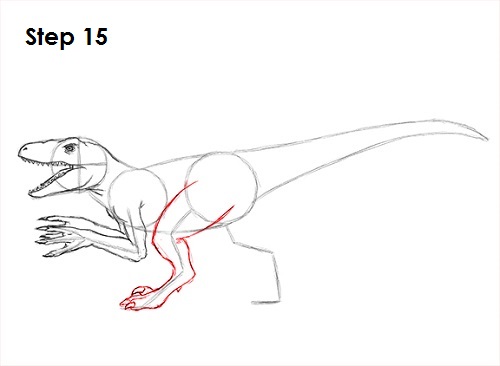
Step 15: Use the line next to the arm as a guide to draw the dinosaur's first leg. Start sketching lightly as you follow the path of the guide. Use curved lines to indicate the leg muscles. When you get the structure of the leg right, darken the lines. The leg should be thickest at the top and thinner near the bottom. At the end of the foot, draw the big toes and the sharp claws at the tips. Draw the velociraptor's famous retracted claw on the other side of the foot by curving the toe upward.
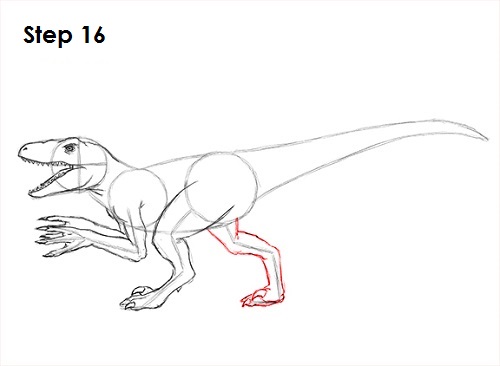
Step 16: Use the line on the right as a guide to draw the leg on the other side. Remember to sketch lightly at first as you follow the guide line to get the shape of the leg right. When you get the structure right, darken the line. The leg should be thinner near the joints or where the line bends. Draw the retracted claw at the end of the foot by curving the toe upward and adding the sharp claw at the tip. Add the other toes flat on the ground and give them claws too.
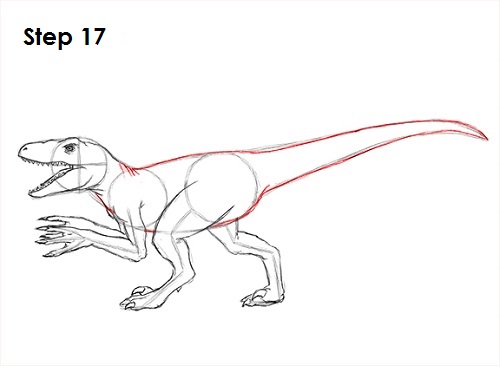
Step 17: Draw the rest of the body and tail by using the remaining lines as guides. Add a few lines at the base of the neck to indicate the folds of skin, as the dinosaur's head tilts up. Simply follow the path of the guides and darken the lines to make up the body. The tail should be long and thick to help counterbalance the weight of the front part of the velociraptor's body.
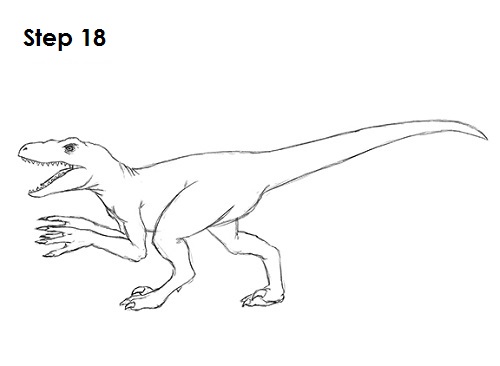
Step 18 (optional): For a cleaner look, erase as much as you can of the initial guide lines. Don't worry about erasing all of the guides. It's okay to leave some behind. Re-draw any final sketch lines that you may have accidentally erased.
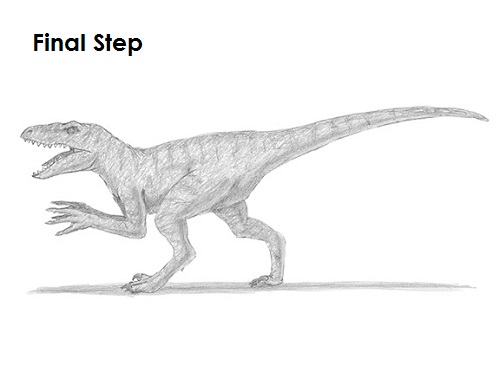
Final Step (optional): Add some shading to your velociraptor drawing to give it more dimension and volume. Pick the direction of the light source when shading so that the shadows are consistent with it. Vary the pressure on your pencil to get different degrees of tonal value. Shade the individual shapes of the body (the forearm, the thigh, the shoulder, etc.) to emphasize the velociraptor's muscle structure. Don't worry about shading too smoothly. You can shade roughly for bumpy and scaly texture. Alternate between light and dark values by adjusting the pressure on your pencil to achieve a rounder, more three-dimensional look.
Draw a cast shadow underneath. This helps ground the dinosaur so it doesn't appear to be floating.
You can also add more value throughout your velociraptor drawing for extra detail. Velociraptors, like many other dinosaurs, are thought to have had feathers, but this is a drawing of the more familiar version seen in Jurassic Park, so add a scaly texture instead. For a rough, scaly texture, draw random tiny, squiggly lines throughout the dinosaur's body. This process may seem more intricate than it actually is. Don't overthink it. Just add the squiggly lines randomly all over the body. You can also add a pattern to the skin, like stripes. Simply draw pointy, triangle-like shapes along the body. Don't forget to pause the "How to Draw a Velociraptor" video after each step to draw at your own pace.
Thanks for watching! Subscribe to the How2DrawAnimals YouTube Channel for a new tutorial every Tuesday.
To learn how to draw popular cartoon characters, visit EasyDrawingTutorials.com.







